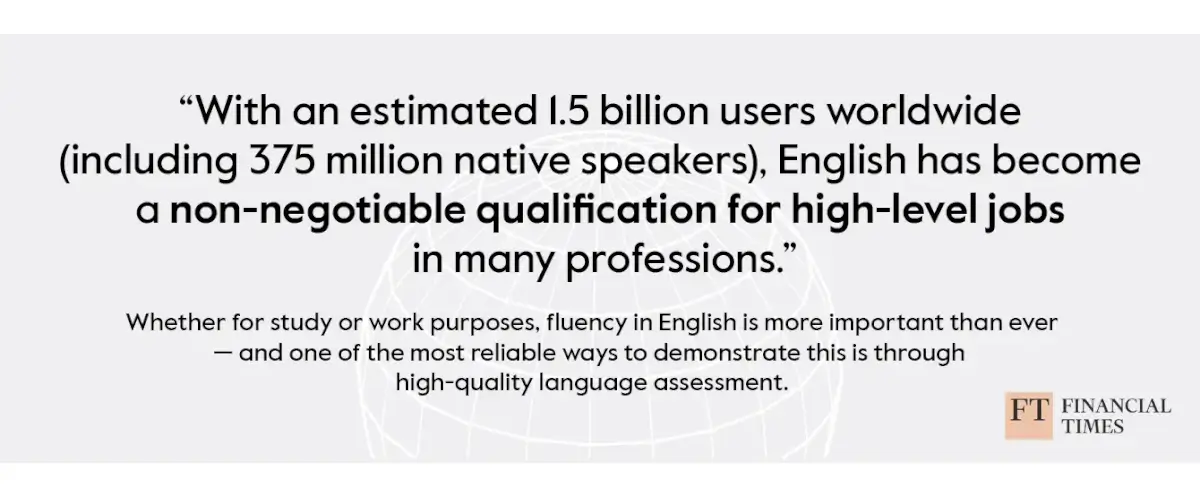Your pathway to Cambridge English success
Explore the full range of internationally recognised English language exams, suitable for learners of all ages and abilities.

As an official Cambridge English Platinum Exam Centre, we offer the full range of Cambridge English exams for children, teenagers, students and professionals. The qualifications are trusted by thousands of institutions and employers worldwide and are backed by the University of Cambridge.
Whatever your goals or ambitions, the Cambridge English Qualifications will give you the skills you need to succeed.
English on the rise
The number of higher education institutions worldwide is growing rapidly, as countries seek to meet domestic and international demand. Many of these institutions still have one thing in common: the use of English as the language of instruction - it remains the primary language of international education.
The same is true in the workplace. As the Financial Times recently noted:

Not all English tests are equal
Some English exams may seem attractive because they are cheaper, appear easier or are less strictly regulated than more established qualifications. However, the real cost of poor-quality assessment, in terms of both finances and reputation, ultimately falls on employers, higher education institutions, professionals, and students.
As the world’s leading provider of English qualifications, Cambridge English helps to ensure the highest standards in language assessment. A rigorous, evidence-based and properly regulated exam does far more than simply test competency; it validates a candidate’s academic and professional readiness while focusing on developing relevant and practical communication skills. This is precisely what Cambridge English exams are designed to deliver.
The risks of inadequate assessment are simply too great.
Quality testing, better outcomes
In recent years, exceptional circumstances have led many universities, companies and organisations to accept less rigorous English proficiency tests. While some have since moved away from these temporary, online-only solutions, others continue to rely on assessments that lack robustness, transparency, and strict regulation.
This raises concerns about security, validity and credibility. Many newer or less well-established tests provide little independent evidence of comparability or quality, offering little more than marketing claims.
In contrast, reliable and transparent assessments provide genuine assurance, supporting better decision-making, outcomes and confidence for institutions, employers and candidates alike.
"When I was 16, I took my first Cambridge English Qualification. It was a nice experience and preparing for the exam helped me become a better writer"

Explore the exam categories

Fun and engaging tests that help young learners build a strong foundation in English.

Designed for school-age learners, with topics and tasks that are relevant to their interests and experience.

From basic to proficiency level users - prepare for study, work, life abroad or learn English as a personal challenge..

Discover the exams and tests that support your career, teaching goals or academic ambitions.
Learn more about Cambridge Exams
Make the most of your exam journey by understanding how the Cambridge English exams and tests work.
FAQs
See moreGeneral information
Find out all about our exams, recognition, formats and special conditions.
Preparation resources
Access study materials, sample tests, and support for your exam preparation.
Preparation Centres
Information on how to become a Preparation Centre, the benefits and support available.
About our centre
Find out who we are, what makes us different, our locations and how to work with us.
